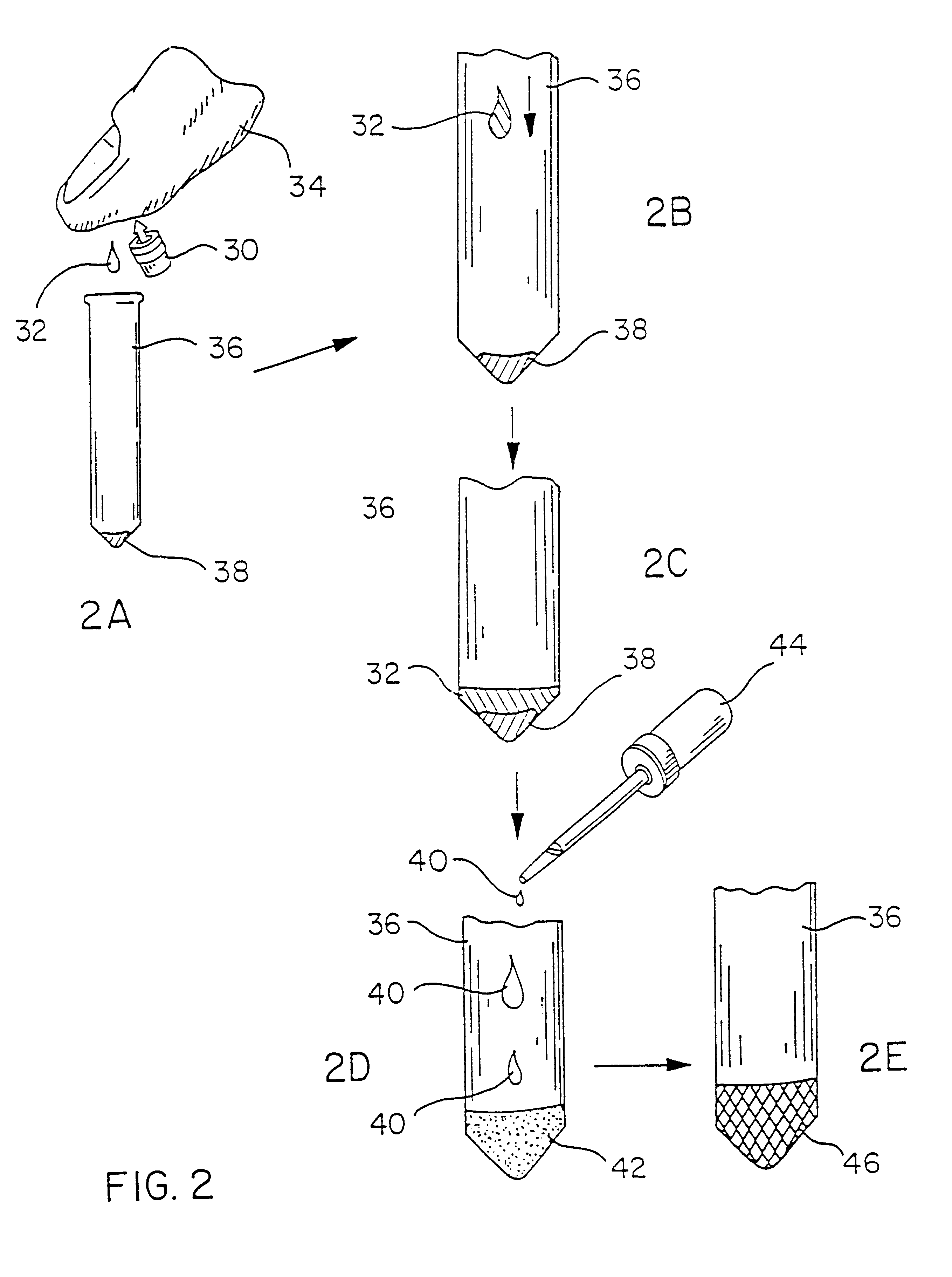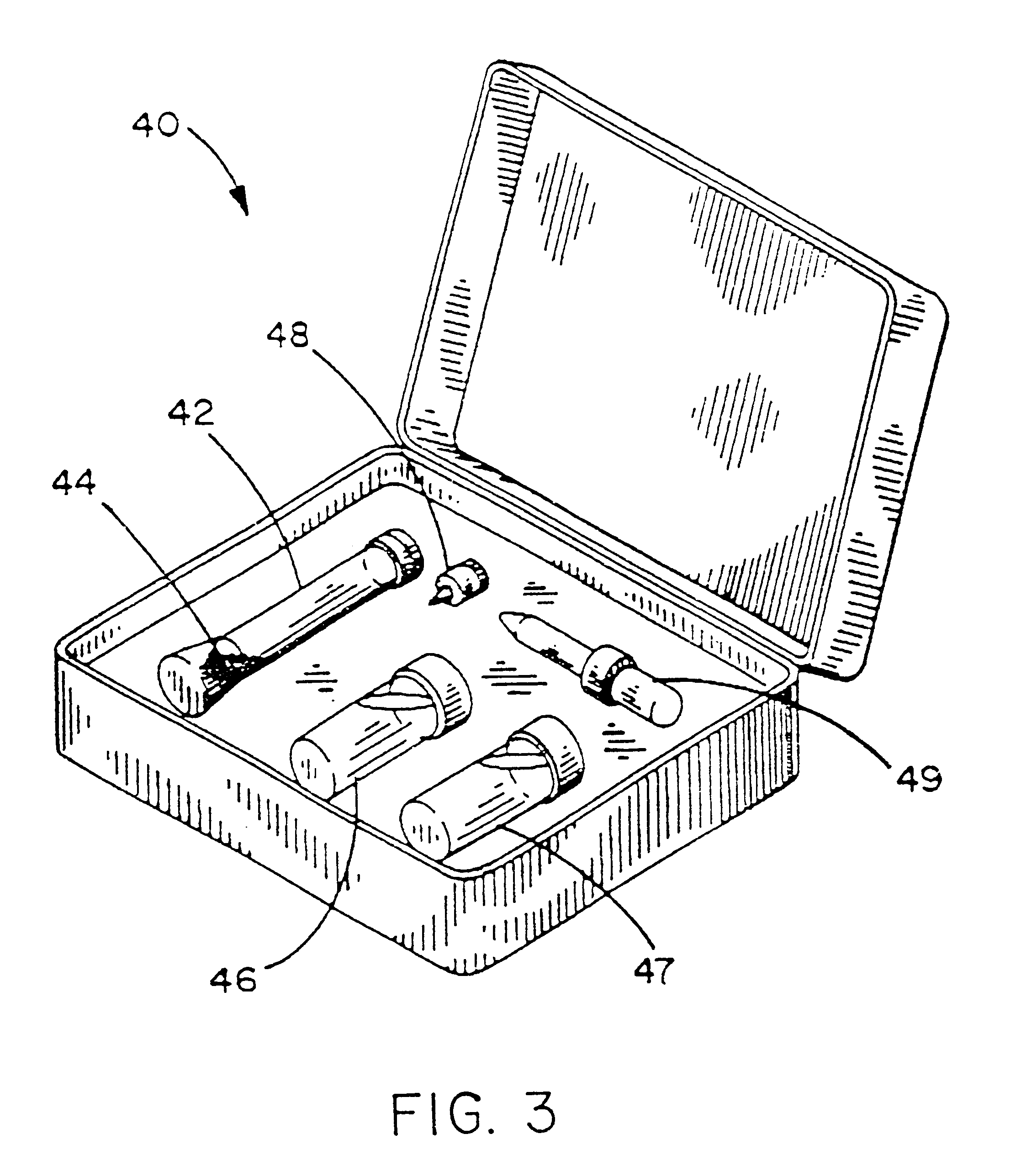Liposome immunoassay
a technology of immunoassay and liposome, which is applied in the field of liposome immunoassay, can solve the problems of no prior art reaction, no advantage over other methods, and formation of the "membrane attack complex" on the surface of foreign substances or cells, and achieve the effect of accurate and fast detection of a large number, economical and simple one-step method
- Summary
- Abstract
- Description
- Claims
- Application Information
AI Technical Summary
Benefits of technology
Problems solved by technology
Method used
Image
Examples
Embodiment Construction
Blood from a patient infected with syphilis will be obtained by the puncture of the fingertip utilizing a commercially available lancet. A drop (20 microliters) of said blood will be deposited in a small vial. Three drops of distilled water (which may be optional) will be added to the vial in order to lyse the red cells, and subsequently 3 drops of a liposome mixture will be applied the liposomes in a concentration of 0.1 micromoles of lipid per 100 microliters of reaction volume will be small unilamellar vesicles including cardiolipin (syphilis antigen) as a constituent, containing a saturated aqueous solution of guaiac gum (purchased form Sigma, St. Louis, Mo.) in their interior. Such liposomes will be suspended in an isotonic solution of phosphate buffered saline containing thimerosal as preservative. The reaction mixture will be incubated for a period between 5 and 20 minutes at temperatures that may range between 22 and 37 degrees centigrade. At that point, a drop of 3% concent...
PUM
| Property | Measurement | Unit |
|---|---|---|
| Color | aaaaa | aaaaa |
Abstract
Description
Claims
Application Information
 Login to View More
Login to View More - R&D
- Intellectual Property
- Life Sciences
- Materials
- Tech Scout
- Unparalleled Data Quality
- Higher Quality Content
- 60% Fewer Hallucinations
Browse by: Latest US Patents, China's latest patents, Technical Efficacy Thesaurus, Application Domain, Technology Topic, Popular Technical Reports.
© 2025 PatSnap. All rights reserved.Legal|Privacy policy|Modern Slavery Act Transparency Statement|Sitemap|About US| Contact US: help@patsnap.com



